Outbound lead generation is an excellent strategy to boost your sales and increase your leads, especially when paired with inbound lead generation. However, it can be difficult to get ROI if not executed properly because of its nature.
This post will share everything you need to know about outbound lead generation and some strategies you can implement for better results.
What are outbound leads?
Outbound leads are generally any leads you get from your outbound lead generation campaigns. These are prospects that have been identified and contacted by your sales team because they fit into your ideal customer profile.
For example, if you’re an accounting software company, your outbound leads will be the accounting managers you’ve discovered from Linkedin, email finder tool, or other sources.
Since a lead is someone who hasn’t purchased anything yet, once they enter the outbound sales funnel, you can then qualify them either as a marketing-qualified lead or as a sales-qualified lead. It all depends on where they are in the sales funnel.
How does outbound lead generation work?
Since outbound lead generation involves proactively reaching out to people who fit your ideal customer profile, there’s a process for discovering these people to convert them. The process includes;
1. Identify your target audience
This stage involves creating an ideal customer profile from your already existing customers. The goal here is to outline the characteristics you want to look out for. What job roles, age, company size, industry, or more would your prospect be in?
Here’s what that might look like when you’re done:
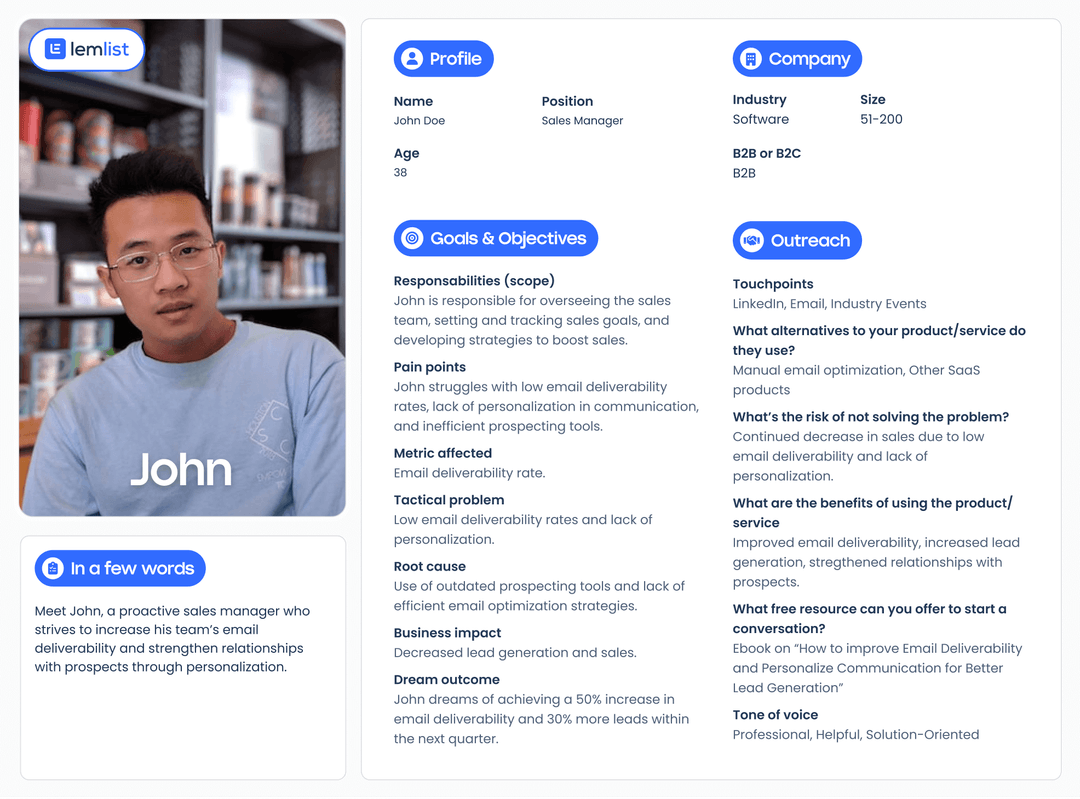
Most importantly, what challenges do they face and how can you solve that problem? What value are you offering? lemlist offers a free ideal customer profile generator to help you get started.
2. Build your prospects’ list
Once you have an idea of who they are, use a B2B lead generation tool to find contact information like email addresses, social profiles, and even phone numbers.
Use a tool like lemlist’s AI-powered B2B database of 450M+ contacts for one-click access to verified, high-relevance leads that you can filter based on your ideal customer profile.
3. Start your outbound outreach and qualify your leads
Identify the channels your leads engage with the most and launch an outbound lead generation strategy. So depending on the audience, it could be cold calling, sending cold emails, invitations on LinkedIn and so much more.
Engage with them and assess their level of interest. Qualify these leads based on how they engage with your outreach.
For better results, you can engage leads on multiple channels and tailor your engagement based on each lead interaction with your message sequence, using lemlist’s multi-channel workflow and advanced conditions for automating outreach sequence.
4. Demo your product or service
For your warm leads or those who’ve shown the most interest, you take them down the funnel by setting up meetings for consultations or demos. This stage consists of making the hard sales pitch.
You’re showing them the value or solution you’re offering and giving them a chance to ask any clarifying questions they might have.
5. Close the deal
After your demo or consultation, your sales team has to keep following up and addressing any concerns the prospect might have. Negotiate any payments (if applicable) and get them to sign a contract. The end goal here is to have a paying customer at the end of the funnel.
Outbound vs inbound lead generation
Inbound lead generation might be somewhat similar to outbound lead generation, however these two strategies are vastly different. Here’s how;
1. Outreach approach
Outbound lead generation involves reaching out directly to the prospects. In this case, your sales team initiates the contact via methods like cold calling, email outreach or social media.
On the other hand, inbound lead generation involves creating resources or value so your prospects are attracted to you. In this case, your prospects initiate the contact by interacting with your resource and offering you their contact details.
2. Controls and permissions
In outbound lead generation, your leads don’t exactly consent to you reaching out since you initiate the contact. However, in inbound lead generation, they give express permission through the lead generation form to be contacted about your offerings.
3. Outreach channels
Outbound lead generation consists of mostly paid channels like advertising or PPC, targeted email, phone and social outreach, or even networking. Inbound lead generation on the other hand uses more SEO, content marketing, social media marketing, or community resources like infographics, industry reports, and more.
4. Lead qualification
Outbound leads are often less qualified because since they didn’t initially express interest in your business, your sales team has to spend more time nurturing them before they convert. Inbound leads are considered more qualified because they have already shown interest in your business and so they are easier to convert.
Outbound lead generation strategies
If you’re ready to start generating outbound leads for your B2B business, here are a few strategies guaranteed to work for your sales team;
1. Cold calling
This might just be the oldest way to generate leads and that’s because it works. Cold calling simply means reaching out to prospects via a phone call.
It’s very personal because you can have a conversation with the lead and it’s easier to convince them over the phone. Plus, even if they don’t convert, you get valuable insights on what to do better during the next outreach.
However, for this to be an effective strategy, you need a sales intelligence tool to help you understand the right person and time to call. Especially since they can just hang up the phone if you don’t hold their attention.
With lemlist, you can use templates and scripts to improve your calls, call only verified numbers directly from your browser, and keep track of everyone who needs a call back with a centralized dashboard.
Pro cold calling tips
- Start a call by disarming them. Talk about a mutual connection, their current projects or something about their company. This will create an opening for a conversation.
- Your first instinct should not be to share your product/service – instead, schedule a meeting to talk more about their problems or understand their needs.
2. Social selling
This method focuses on reaching out to prospects on the social channels they use. For B2B businesses, your prospects are most likely on channels like Linkedin, and Twitter. So using these channels to reach out is guaranteed to get you responses when you do it the right way.
Since LinkedIn has restrictions on the number of connections and messages you can send in a day, you need a tool designed to automate and scale your LinkedIn outreach strategy.
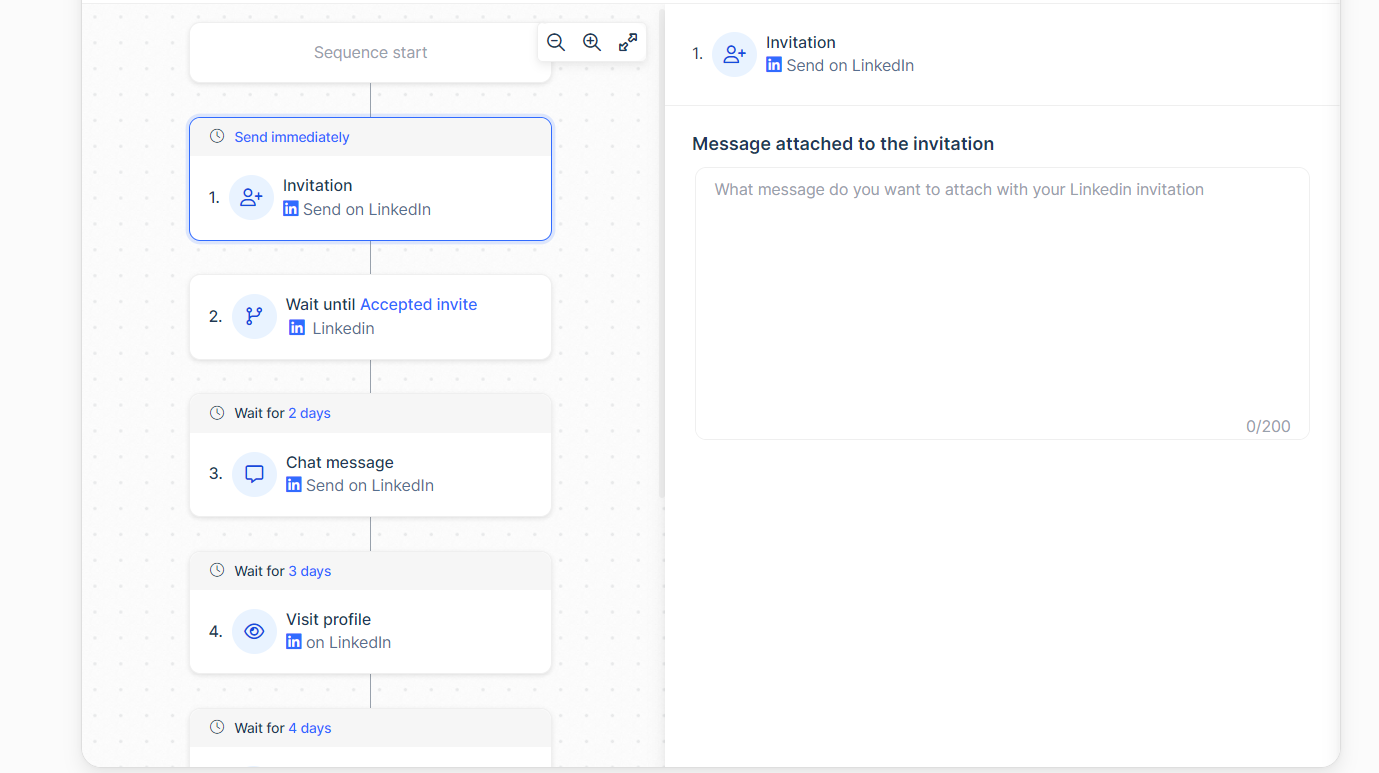
With lemlist sales engagement platform, your team can find your prospects, send automatic connection requests that won’t get you banned, contact them with a workflow campaign and even include steps like leaving comments on their posts.
Twitter is also an excellent social channel for outbound lead generation. Set up a workflow to export connections who engage with your content and page.
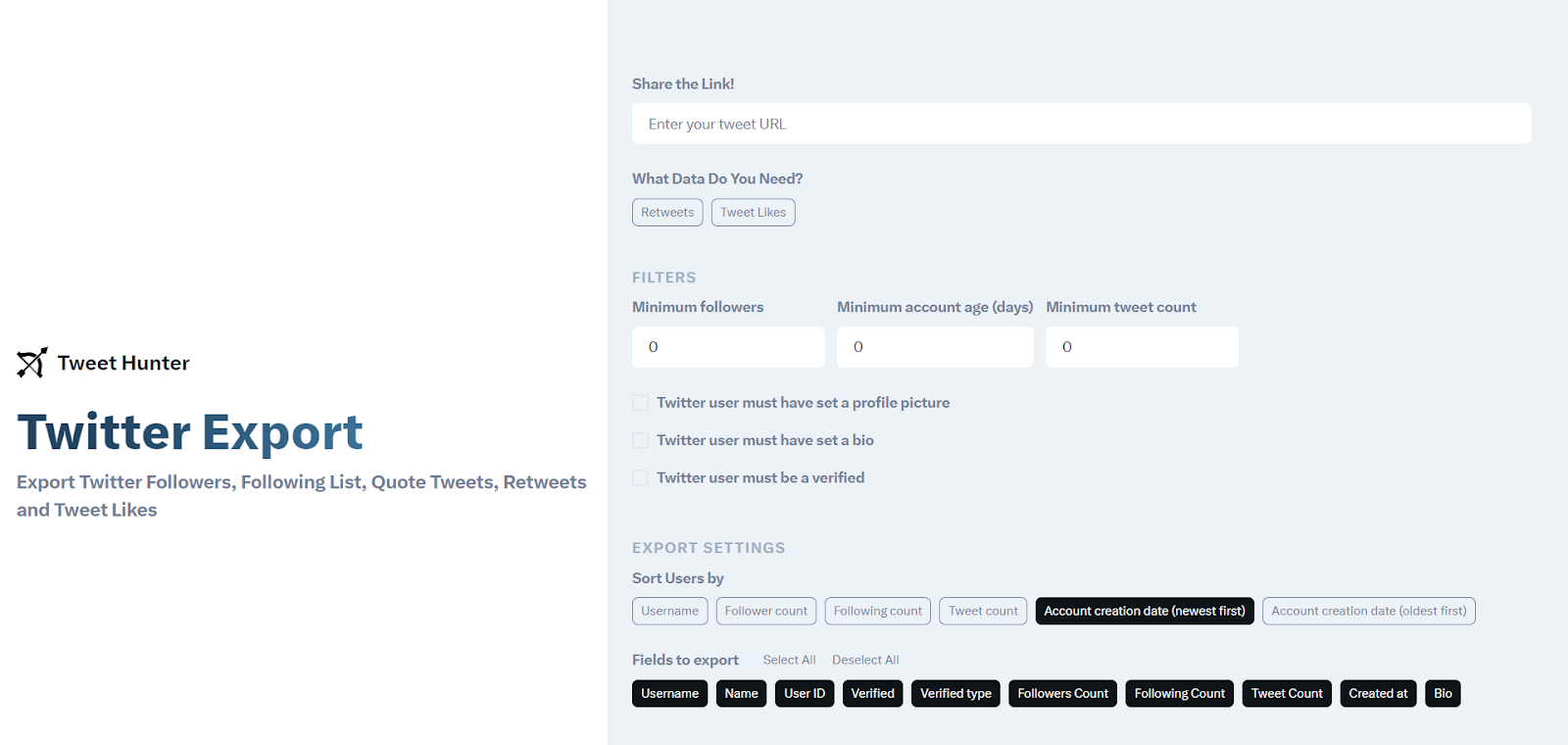
You can then launch a campaign to turn these connections within your CRM into paying customers. A great tool to help with this is the Tweet Hunter export tool.
Pro tips for social selling
- Include the LinkedIn voice notes feature on lemlist to your sequence, to make your outreach even more personalized and human.
- Did you and a prospect attend the same university or industry event? Highlight that connection in your outreach message on Linkedin and leverage the shared experience
- Import people who also engaged with a competitor’s tweet; especially those who have had a terrible experience with them and win them over
3. Event networking
Outbound lead generation isn’t something that just happens online – you can also meet them offline. Leverage your industry events to meet B2B-qualified leads and nurture them.
These events are a great way to connect with certain pre-qualified leads who are already interested in your industry and the potential solutions you’ll be providing. You can showcase your expertise and build relationships in a more personal way even more than phone calls.
So encourage your sales teams to participate in trade shows, conferences, and workshops to network with these leads. They can even combine more tactics by sending messages via lemlist before the events.
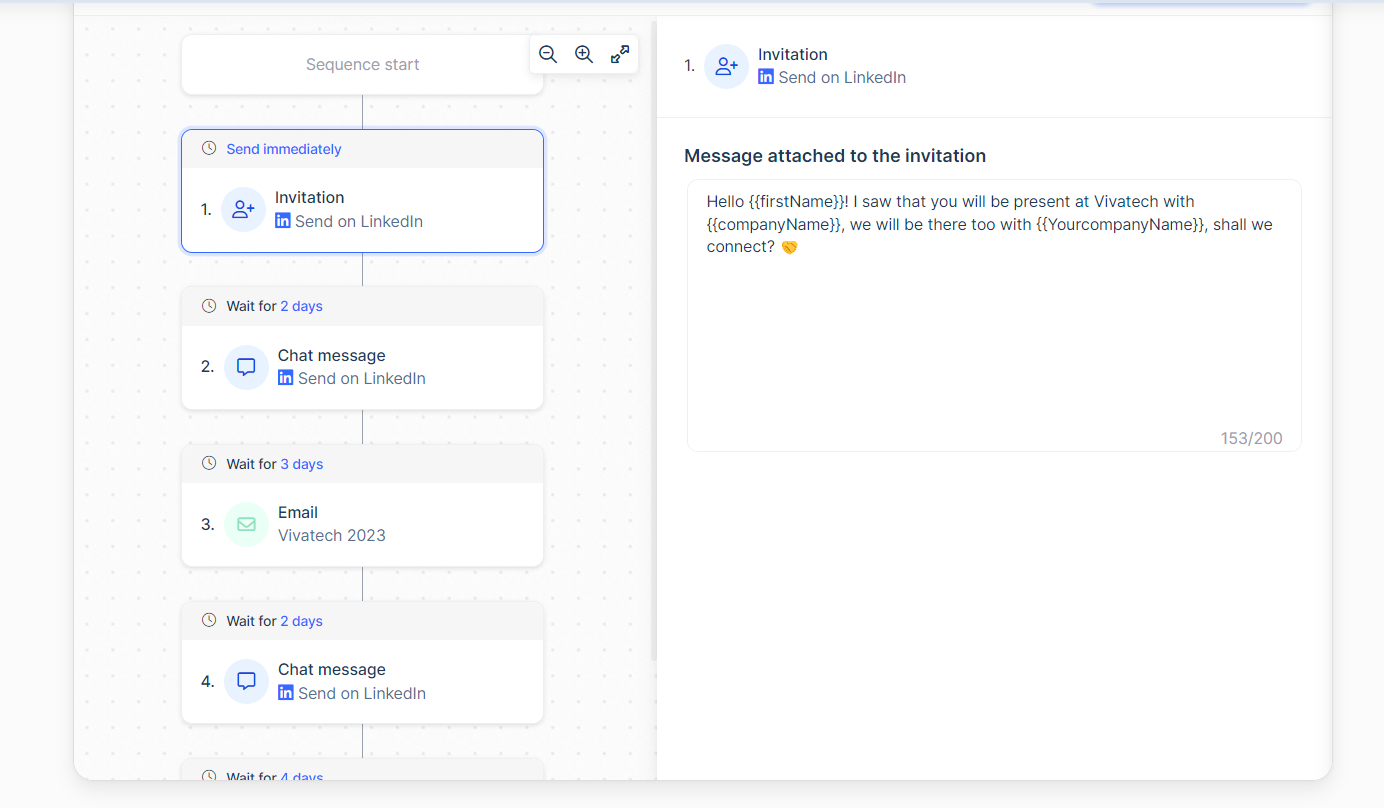
Just be sure to research the attendees beforehand and identify some high-value prospects you want to connect with beforehand.
Pro tips for event networking
- Stand out even more by contributing to the event. Propose resources that’ll position you as a thought leader before you even walk through the door.
- After events share relevant articles or resources that’ll keep you at the top of your mind and create a connection to build on.
4. Cold email outreach
Cold emails are a cheaper and less time-consuming way to reach multiple prospects at the same time. Once you identify your ideal customer profile, you can find their email address, and send highly personalized messages.
The key is to have the right person’s contact and send the right message. You want to be sure you personalize your solution to each prospect’s problem. Since it’s impossible to do this manually, especially on a large scale, we recommend using a cold email outreach tool to streamline the process.
A tool like lemlist can help you find emails, verify them to protect your sender’s reputation and personalize your outreach at scale. You can do this with multiple contacts by simply uploading a CSV. You only need the name, company and Linkedin profile if you have one.
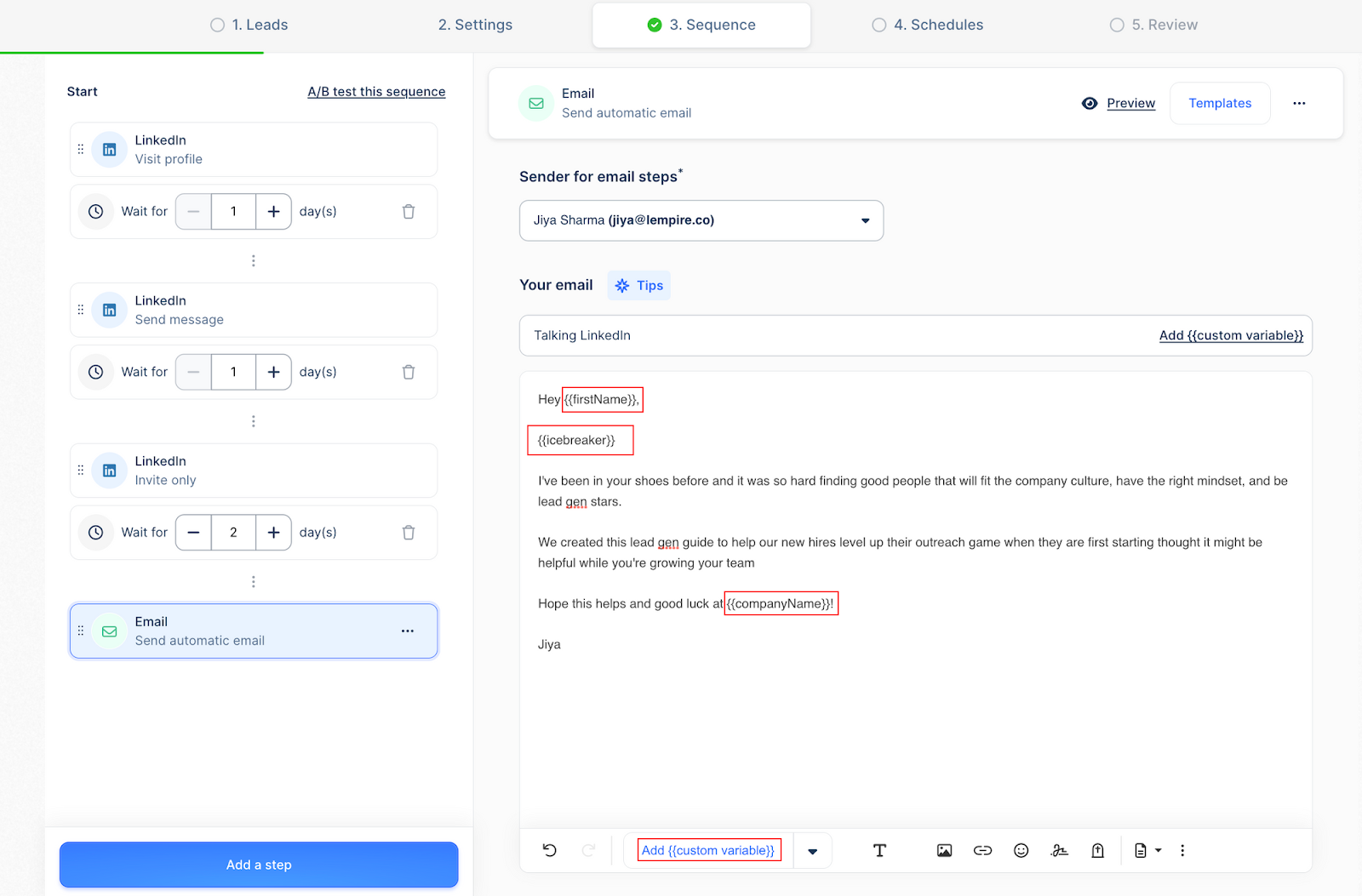
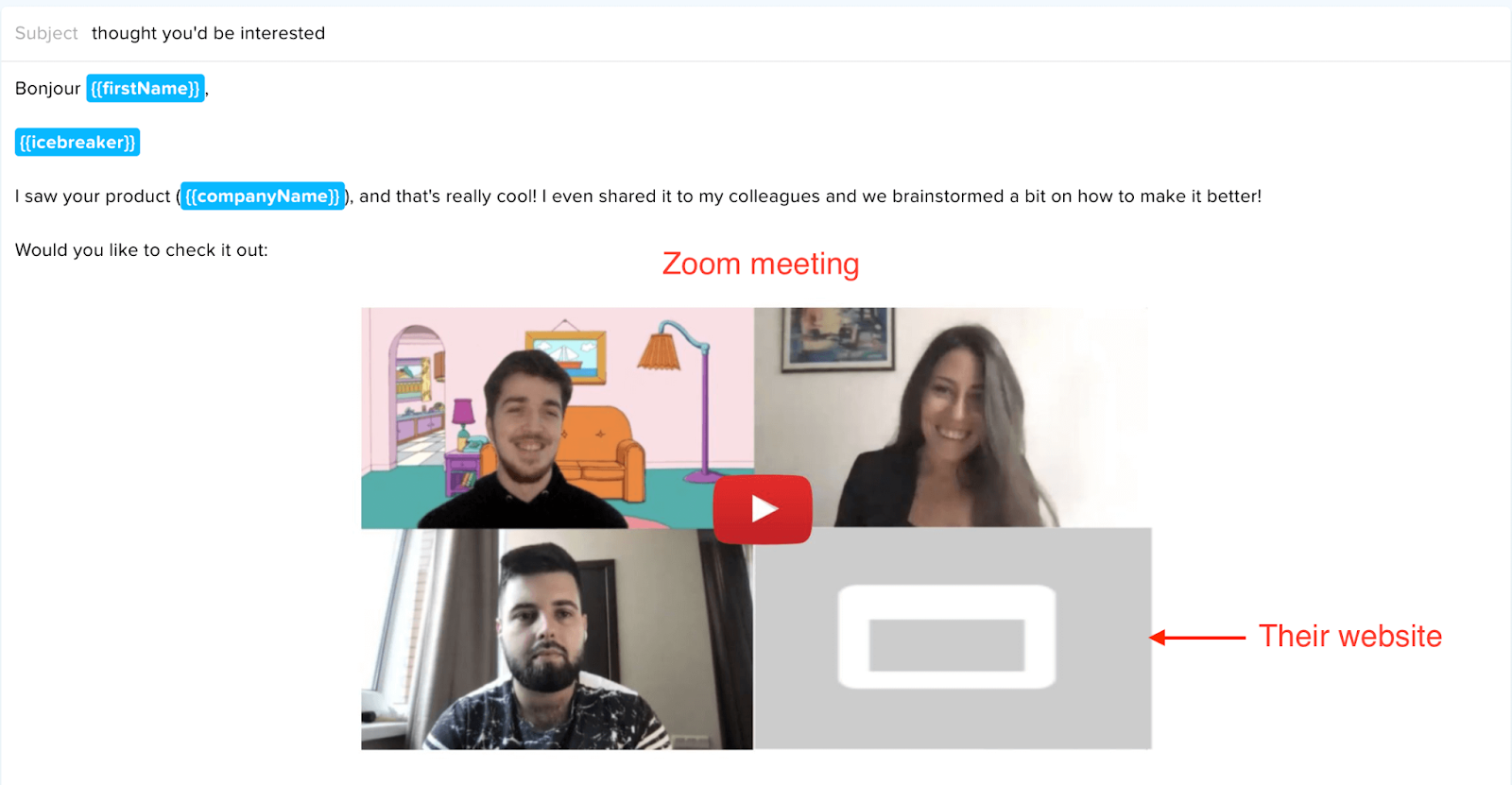
You can use the free cold email generator, to craft email content that’ll actually convert.
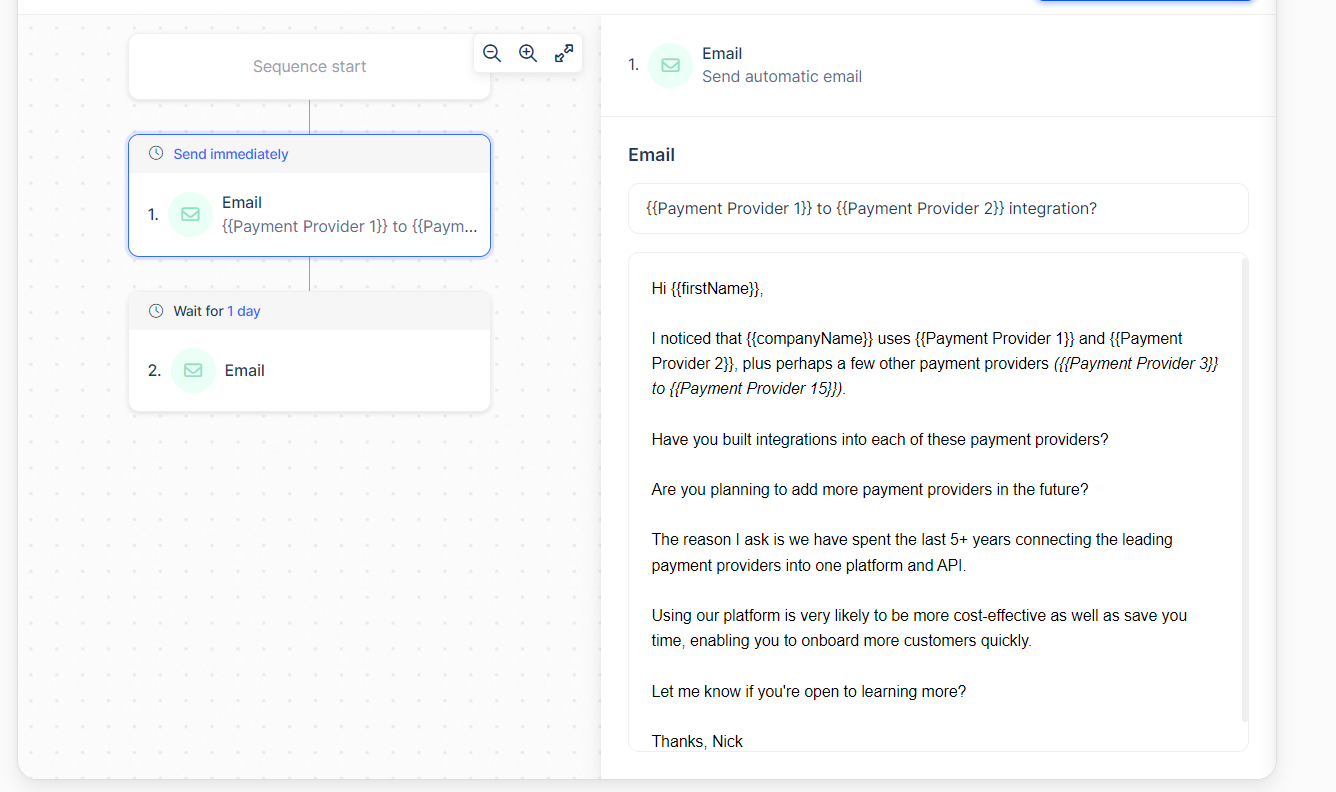
Pro tips for cold email outreach
- Extract emails directly from company websites and business listings online using an email extractor
- When sending bulk emails, check your deliverability first so your content doesn’t end up in spam, and use a warm-up tool so you don’t trigger spam filters.
5. Multi-channel Outreach
Your prospects are engaging with more than one channel every single day. This is why an outbound lead generation strategy is reaching out to them across multiple platforms.
By combining channels like phone calls, emails, and LinkedIn outreach, they have a higher chance of responding to your pitches. lemlist has several multi-channel templates with results that you can get started with.
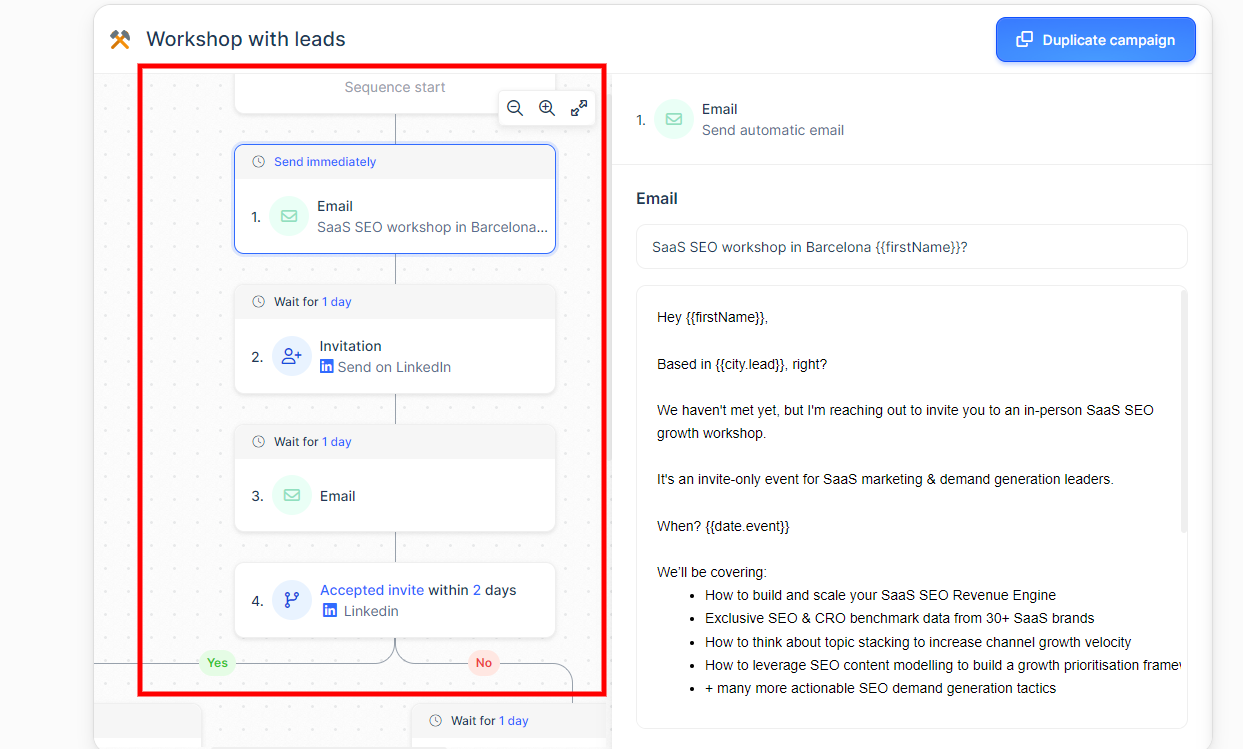
Just ensure there’s a smooth transition between channels. For example, if someone responds to your social media message, have a system in place to transfer the conversation to a sales rep for a more in-depth discussion
Tips for multi-channel outreach
- We recommend starting with a low-key touchpoint, like a social media comment, then following up with a more personalized email or phone call
- For high-value prospects, consider a short, pre-recorded video email introducing yourself and highlighting how your solution addresses their specific needs. This adds a personal touch
6. PPC Advertising
This is such an effective technique because it allows you to reach out to people who are already searching for what you offer. Plus with PPC, you can target users based on specific demographics, interests, online behavior and just key decision makers that are likely to interact with your solutions.
Plus you can make your campaigns span across multiple channels like search engines, LinkedIn ads, Twitter ads and so much more. So we recommend using a multi-channel approach also for your PPC ads. Target prospects on Google, Bing, and more to widen your top of the sales funnel.
Pro tips for PPC advertising
- Many PPC platforms allow you to upload lists of target companies you want your ads shown to. Use this to reach the specific decision-makers in your ICP.
- Don’t just use text ads. Leverage multiple ad formats including video to see which variation converts best.
Conclusion
Remember, the key to success in outbound lead generation isn’t about overwhelming prospects, by sending messages every day. But about providing value, building trust, and offering genuine solutions
Don’t be afraid to experiment with different channels, personalize your approach, and showcase your expertise.
Ready to get started? Sign up for a lemlist free trial to start generating high-quality leads for your B2B business.
Your source of actionable outreach tips and strategies that will help you get replies and grow your business.

